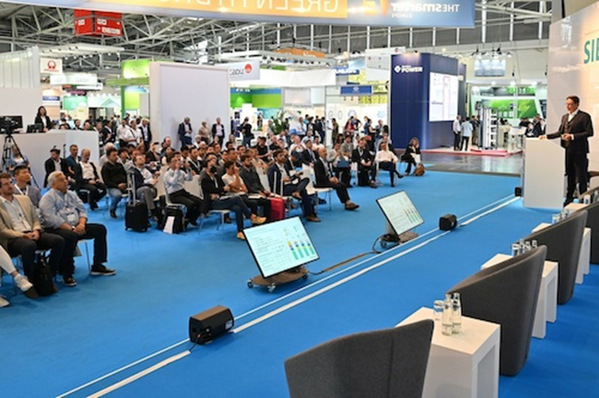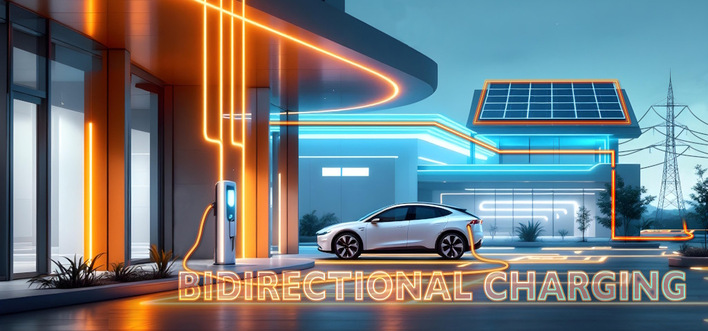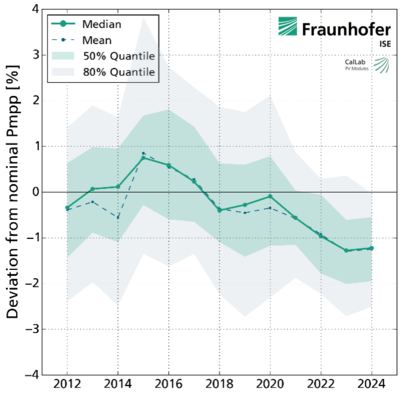In recent years, some car manufacturers have already presented the first vehicle models with photovoltaics integrated into the roof. The roof is the easiest sur- face to use for on-board solar power generation. Researchers at the Fraunhofer Institute for Solar Energy Systems ISE have now gone one step further. As part of two publicly funded research projects, they have integrated solar cells into the standard sheet metal hood of a regular passenger car. Coupled with the re- search institute’s MorphoColor technology, the solar-active surface can be color-matched to that of the vehicle. Visitors to IAA MOBILITY can have a closer look at the photovoltaic hood from September 5-11, 2023, at the Fraunhofer booth (Hall B1.D11) in Munich.
Shingle solar cells
“We applied the solar cells to the hood panel of a car model that is frequently sold in Germany, interconnected them and laminated them with film,” explains Dr. Martin Heinrich, coordinator for PV mobility at Fraunhofer ISE. “To achieve this, the lamination process was optimized carefully to minimize air pockets, avoid wrinkling of the film module, which can occur due to the curved surface area, and to maintain the overall integrity of the hood structure.”
Also interesting: Solar modules suitable for vehicle-integrated PV
So as to make the most efficient use of the available surface area on the hood, the Fraunhofer ISE team constructed their prototypes using a selection of IBC, PERC shingle, and TOPCon shingle solar cells. In principle, any solar cell technology can be used. Laminating the surface area with film results in a textured surface structure that can be color-matched to the vehicle color using MorphoColor technology. “We’ve already achieved a very good aesthetic with this,” continues Dr. Heinrich, “and we’re currently working on improving the surface appearance even further. To this end, we’re actively on the lookout for project partners who are interested in joint development.”

Fraunhofer ISE
In addition to the curved shape, the substrate is also unique to the hood PV module in this instance, as it is made of sheet metal rather than being a classic rear surface made of film or glass. This prompted the scientists to investigate the adhesive properties of various material combinations. After identifying suitable materials, the research team built prototypes both with different quantities of solar cells and different cell and inter- connection technologies. The team tested all prototypes intensively in the laboratory to ensure the electrical performance, reliability and durability of the PV engine hood de- monstrators.
Large potential for integrating PV into vehicle shells
The 115-watt rated vehicle hood on display at IAA MOBILITY features more than 120 PERC shingle solar cells and is finished in MorphoColor gray.“The technology could also be applied to the metal roofs of vehicles, which would have the advantage of being much lighter than photovoltaic roofs made of glass,” adds Dr. Harry Wirth, Power Solutions Division Director at Fraunhofer ISE. “Expanding the technical possibilities for integrating photovoltaics into vehicle shells will appeal to more and more customers; there is still a lot of potential to be tapped here.”
Also interesting: Solar facade with transparent modules
The PV engine hood was developed as part of the “HighLite” research project, sup- ported by the European Union’s Horizon 2020 program, and the “3D – PV Modules with Contour for Integrated Photovoltaics” research project, supported by the German Federal Ministry for Economic Affairs and Climate Action (BMWK). (hcn)








